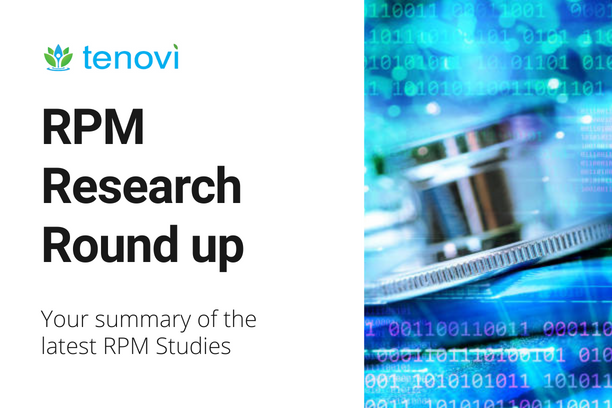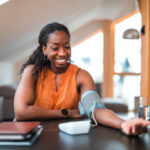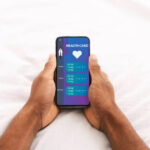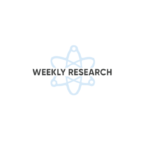Welcome to Tenovi’s remote patient monitoring and telehealth research weekly. This week’s research roundup draws on various statistics, facts, and data on remote patient monitoring and telehealth topics from 3 recently published studies. Tenovi is your one-stop resource for remote patient monitoring, telehealth studies, clinical reference, and education.
This week’s roundup summarizes research published last week on:
- Congestive heart failure (CHF) using remote hemodynamic monitoring
- Remote monitoring for neurological conditions, specifically in multiple sclerosis
- Telehealth study on stretching exercise program for fibromyalgia
Subscribe to weekly remote patient monitoring and telehealth updates by scrolling to the bottom of this post to enter your email address.
Remote Patient Monitoring and Telehealth: Weekly Research Roundup
This week’s remote patient monitoring and telehealth weekly research roundup starts with statistics, facts, and data you need to know about congestive heart failure (CHF) patients using remote patient monitoring. American Journal of Cardiology published a study aimed at identifying if remote hemodynamic monitoring can reduce heart failure exacerbation and mortality in patients with CHF patients.
The study compared the effectiveness of remote hemodynamic monitoring with standard care in managing patients with CHF. The results revealed a 32% lower risk of CHF hospitalization in the remote monitoring group than in the control group. The results show evidence concerning the comparative effectiveness of remote CHF monitoring and standard CHF care. Moreover, the authors report that the results suggest integrating telemonitoring systems with traditional medical management may improve heart failure patient care.
Remote Patient Monitoring & Telehealth: Use in Neurological Disorders
This week’s remote patient monitoring and telehealth show that remote health technologies improve data collection and empower patients with neurological disorders. Indeed, several clinical trials have existed on major chronic neurological diseases such as Alzheimer’s, epilepsy, multiple sclerosis, and Parkinson’s. In addition, a study published in NPJ Digital Medicine reviewed research from ClinicalTrials.gov on digital health technologies in neurology trials.
The review found that digital sensing devices may improve the quantity and quality of data collection during clinical trials. In addition, remote monitoring devices enhance patient recruitment. This is because a remote environment is less burdensome and more empowering for patients. In neurological diseases like Parkinson’s (PD), validated, reliable remote monitoring data provides better vital sign data on disease severity in early-stage patients.
This Week in Remote Patient Monitoring and Multiple Sclerosis
JMIR Neurology published a review of apps for remote monitoring patients with multiple sclerosis (MS). The first advantage is that app-based evaluations lead to research on MS patients with more significant disabilities. For example, one study found that some MS patients needed help to complete a brief, standardized, quantitative test of upper extremity function 9-Hole Peg Test (9-HPT). Yet, they could participate in the app-based form of testing. Therefore, app-based testing may be helpful for some patients when completing required testing.
Results suggest that adherence might be higher for those apps that require less frequent active involvement for MS patients. One commonly used test for MS patients is the Symbol Digit Modalities Test (SDMT). The test measures information processing speed (IPS). In summary, correlations between the app versions of standardized and traditional tests were moderate to strong. The findings of this study suggest that app-based testing is adequate for use with standard in-person testing.
Capturing subtle mental and physical changes of possible disease worsening in MS patients can occur between office visits. Televisits in multiple sclerosis now frequently occur and yield high satisfaction for both patients and physicians. Floodlight is a smartphone-based digital assessment developed by Roche and Genentech that provides insights into MS. Floodlight app offers tests that measure brain function, hand function, and mobility. RPM technologies provide measures to help detect whether symptoms of a disease are worsening, ultimately leading to improved patient outcomes.
Telehealth Research This Week: Fibromyalgia Stretching Program
A study on a Fibromyalgia telehealth stretching program found that with or without remote supervision, it promotes relevant positive effects on pain, sleep quality, symptom severity, the impact of Fibromyalgia on daily activities, depression symptoms, and flexibility in women with Fibromyalgia. In addition, the telehealth program group showed more expressive improvement in daily activities than the control group.
Furthermore, participants reported their well-being as very satisfied after participating in 12 weeks of the exercise program in telehealth. Many participants in the telehealth group updated their classification to very active. The results demonstrate the superiority of remote supervision in some outcomes. Moreover, telehealth activities in all areas reduce expenses.
Remote Patient Monitoring Research: Surgical Home Hospital Programs
Compared to medical complications, surgical complications are generally infrequent but potentially catastrophic. The ability to detect physiologic signs of stress that serve as early warning signs is critical for the surgical home hospital effort. Home hospital care models extend clinical expertise and new digital health advances to the patient’s home environment.
Real-time temperature, EKG, respiratory rate, blood pressure, and pulse oximetry allow frequent vital sign monitoring at home. In addition, remote patient monitoring (RPM) technologies are essential to expanding follow-up surgical care delivery in the house. Remote patient monitoring tools record and transmit patient data to providers.
FDA-cleared remote patient monitoring devices are available as wearables, and some devices connect to a health hub or gateway via cellular networks to collect continuous or intermittent data. For example, some devices, including wireless blood pressure monitors, scales, blood glucose meters, and pulse oximeters, can all be connected to the health hub.
Remote Patient Monitoring Case Study: Brigham and Women’s Hospital
Successful surgical home hospital programs redesign clinical workflows instead of replacing them with technology. Current surgical home hospital programs use many new digital health technologies to enable the delivery of quality care in the home. For example, at Brigham and Women’s Hospital, surgical home care is used in bariatric surgery and programs developed in plastic surgery, general surgery, and urology.
In addition, technologies, including remote patient monitoring devices, clinical risk prediction models, and virtual care platforms, facilitate care for patients at home. Remote physiological monitoring devices used include a Bluetooth blood-pressure cuff and pulse oximeter. Data transmitted by the RPM devices are sent to a secure portal for qualified healthcare professionals to access anytime. Vital sign abnormalities can be detected, allowing for quick virtual visits, depending on severity. The Brigham and Women’s Hospital platform provides a patient-facing interface with daily reminders.
Tenovi – Powering the Remote Health Revolution
You can subscribe to Tenovi’s weekly remote patient monitoring and telehealth updates by scrolling to the bottom of this post to enter your email address. Research shows that the Tenovi remote patient monitoring platform increased the number of patients eligible for Medicare CPT code 99454 reimbursement by 27% compared to other leading cellular remote patient monitoring devices.
Patients who use Tenovi’s remote patient monitoring devices report spending much less time setting up the device at home, and greater ease of use, which leads to increased patient data for providers to implement improved patient care. Book your free demo with Tenovi today.






